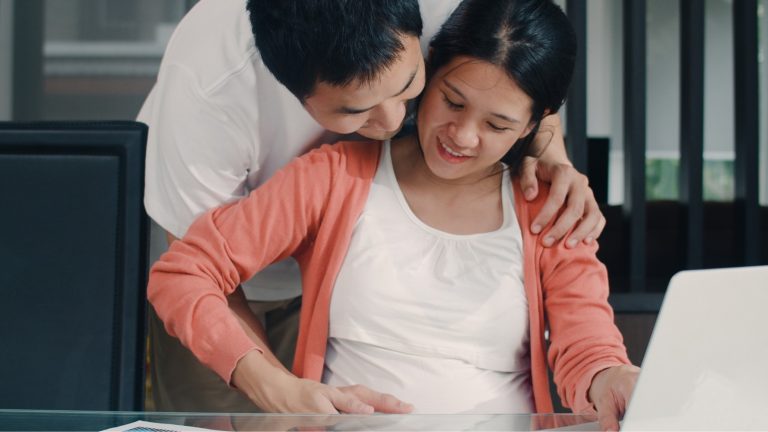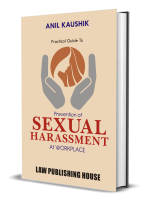The Supreme Court has delivered an important judgment in the case of K. Umadevi vs. Government of Tamil Nadu [(2025) INSC 781], decided on May 23, 2025 on maternity benefits, that may be of interest to employers across sectors. We share below the key aspects of this decision for your information.
Case Background
Umadevi, a government school teacher, was denied maternity leave for her child born from a second marriage on the ground that she already had two biological children from a previous marriage. The denial was based on Tamil Nadu’s Fundamental Rule 101(a), which restricts maternity leave to women with “less than two surviving children.”
The appellant’s circumstances were that she had married in 2006, had two children in 2007 and 2011, divorced in 2017 with both children remaining in their father’s custody, remarried in 2018, and conceived her first child from the second marriage. She was appointed as a teacher in December 2012. When she applied for maternity leave from August 2021 to May 2022, her request was rejected under the state’s two-child policy.
A learned Single Judge of the High Court granted relief, but the Division Bench reversed this decision. The matter reached the Supreme Court through appeal.
Supreme Court’s Analysis
The Supreme Court allowed the appeal and granted maternity leave to the appellant. The Court’s analysis rested on several key foundations.
The Court held that maternity benefits are constitutionally protected under Article 21 (Right to Life and Personal Liberty), observing: “Life under Article 21 means life in its fullest sense; all that which makes life more meaningful, worth living like a human being.” The Court also referenced Article 42, which mandates state provision for “just and humane conditions of work and for maternity relief.”
Also read – Nexus Select Trust elevates Santosh Kumar Dhanewar as AVP-HR
The Court noted the specific circumstances: “Post entry into service and from her subsisting marriage, this is her first child. It has come on record that the two children out of her first wedlock are not residing with her but with their father, who is having their custody.”
The judgment emphasized that “provisions relating to maternity benefits must be imbued with a purposive construction” and “must receive a liberal construction to promote its objects.” The Court relied on international instruments including the Universal Declaration of Human Rights, CEDAW, and ILO conventions.
Legal Principles
The judgment establishes that mechanical application of numerical child limits without considering individual circumstances may be constitutionally problematic. The Court analysed the Maternity Benefit Act, 1961, noting that while it does not directly apply to government servants, it provides useful guidance.
Section 5(3) of the Maternity Benefit Act provides that the maximum period entitled to maternity benefit by a woman having two or more than two surviving children shall be twelve weeks. Significantly, there is no disqualification under the Act – women with two or more surviving children are still entitled to maternity benefit, albeit for a reduced duration of 12 weeks, compared to 26 weeks for women with fewer children. The term “surviving children” is not defined in the statute.
The Supreme Court noted approvingly that the central legislation provides “graded benefits” rather than complete denial, observing: “there is no ceiling or cap on the number of children to claim maternity benefit. Only thing is that in case of a woman employee having two or more than two surviving children seeking maternity leave, period of the benefit is reduced.” This interpretive guidance could influence how courts approach Maternity Benefit Act cases involving complex family situations. The Supreme Court used this analysis to critique the rigidity of the service rule under challenge, suggesting this approach aligns with constitutional principles and could provide persuasive interpretive guidance for private sector applications as well.
The decision builds upon Deepika Singh v. Central Administrative Tribunal (2023), where the appellant was denied maternity leave for her first biological child on the ground that her spouse had two children from a previous marriage, which were not her own. The Supreme Court held that those children could not be counted against her for the purpose of determining maternity benefit entitlement. While Deepika Singh case dealt with children from the spouse’s prior marriage, and Umadevi case dealt with the woman’s own children from a prior marriage, both cases reflect a consistent constitutional approach: the purposive, liberal interpretation of maternity entitlements in a manner that is sensitive to evolving family structures and individual dignity.
Relevance to Employers
The judgment has implications across employment sectors in India. For private sector employers under the Maternity Benefit Act, 1961, the decision reinforces that complete denial of maternity benefits is not permissible – the Act mandates minimum entitlements of 12 weeks even for women with two or more surviving children. Policies that align with the Act by providing 26 weeks of maternity leave for women with fewer than two surviving children and 12 weeks for those with two or more are legally compliant. However, given the evolving jurisprudence, rigid application of the “two or more surviving children” criterion could face constitutional challenge in exceptional cases involving remarriage, custody issues, or complex family structures.
The constitutional framework established by the Court suggests that employers may need to consider individual circumstances in cases involving complex family situations, including custody arrangements, remarriage, timing of childbirth relative to employment, and practical caregiving responsibilities.
Key Observations
The Supreme Court’s approach represents a shift from treating maternity benefits as statutory concessions to recognizing them as constitutionally protected rights requiring purposive interpretation. The judgment emphasizes harmonizing policy objectives (such as population control) with individual reproductive rights rather than creating absolute bars.
The decision reflects evolving jurisprudence on reproductive rights and suggests that employment policies must adapt to contemporary family structures involving divorce, remarriage, and complex custody arrangements.
The constitutional elevation of maternity benefits indicates that rigid policy applications without consideration of individual circumstances may face increased legal challenge.
Concluding Note
This judgment establishes significant precedents for interpreting maternity benefit provisions across both public and private employment. The principles articulated by the Supreme Court are likely to influence future litigation and policy interpretations in this area.
Note: This information is shared for general awareness and should not be construed as legal advice. Specific legal guidance should be sought based on particular circumstances and requirements.
Stay connected with us on social media platforms for instant updates click here to join our LinkedIn, Twitter & Facebook





